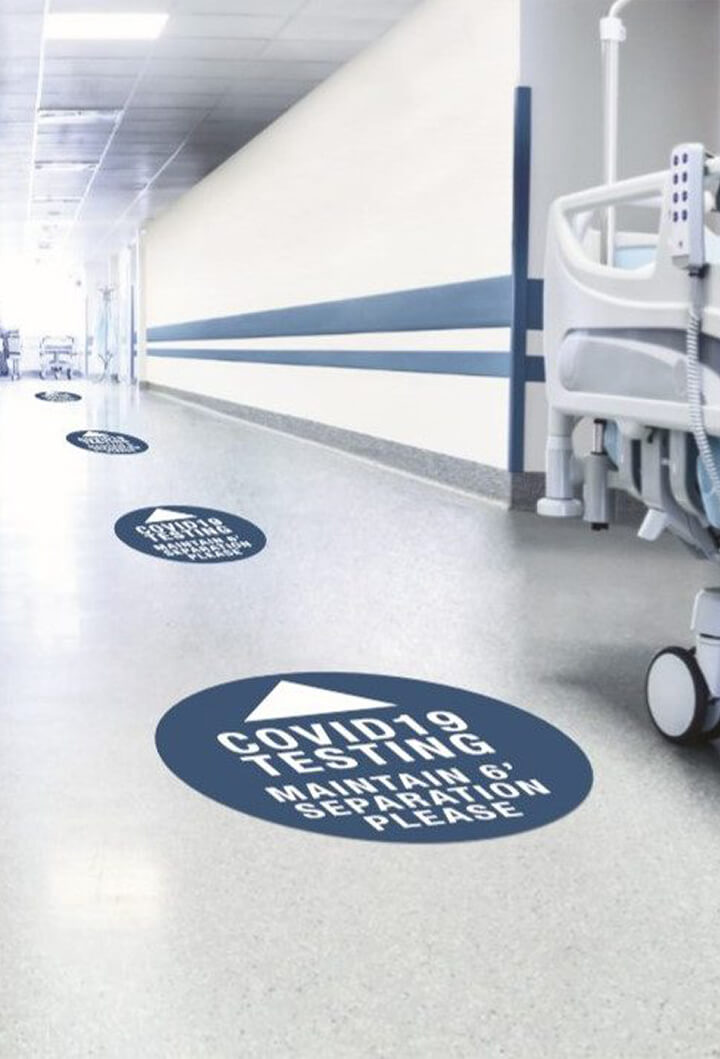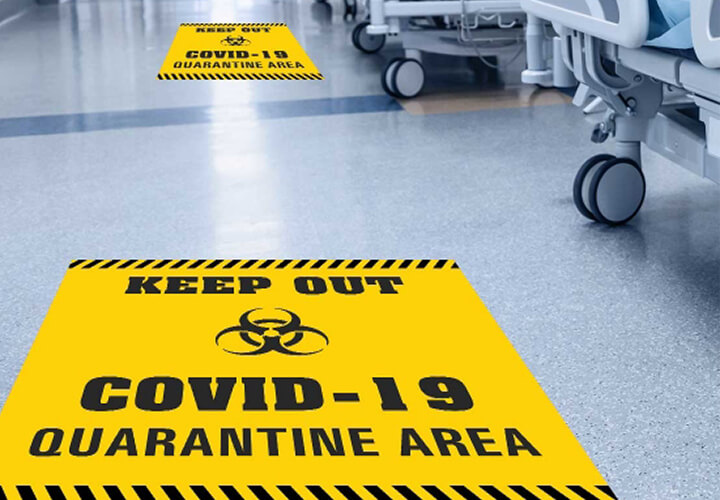Hospital wayfinding is going to be a “high priority” for healthcare organisations as they look for ways to minimise contagion from coronavirus.
Last week, we joined an interesting online discussion hosted by Indesign about the design of healthcare facilities post-COVID-19. Each speaker shared some fascinating insights, including the suggestion that wayfinding designers will play an important role in making hospitals safer as the world continues to grapple with the coronavirus crisis.
The discussion featured Leanne Guy, Principal and Sector Leader at Hassell, Mark Healey, Studio Director of Bates Smart, and Joshua McAlister, Associate Director of CHT Architects, and was facilitated by Indesign’s Jan Henderson.
“There are significant lessons to be learned from the coronavirus pandemic. A big part of what needs to change is space: hospitals will need to reassess spatial allocations in times of surge, while also rethinking staffing models – what will the physical distancing of staff mean for all other areas of the hospital?” asked Leanne.
Reception areas have been shrinking with the introduction of digital check-ins, for example. But in the age of coronavirus, cramped and crowded waiting areas no longer feel safe. Conversely, the coronavirus has led to a rise in telehealth. With more people seeking treatment online, it’s possible that some areas of the hospital will need to contract, while others expand.
Mark agrees that adaptability and flexibility are key. When designing the Gandel Wing at Cabrini Malvern in Victoria, Bates Smart used the same footprint or “module” for rooms on each floor. This means if Gandel Wing needs to transform entire floors into airlocked isolation rooms, for example, it can be done quickly using partitions and joinery.
“Hospital wayfinding is going to be critical”
“Wayfinding is going to be a high priority for hospitals. They need to decrease the flow of people moving around, and get people from A to B as quickly as possible,” said Leanne.
“The arrival experience is so important. When SARS emerged in Singapore, we saw hospitals triaging ambulance and walk-in patients before they even reached the hospital environment, and then separating flows again at Emergency to protect staff and patients.”
According to Mark, there is some really interesting work being done by industrial and graphic designers that shows the importance of communicating with visitors early. When people know there’s a plan in place to get them to their appointment or ward safely, it helps them stay calm. “Social distancing is creating a lot more delays and elevating stress. Hospitals will need to impart information very clearly – it’s a really good challenge for wayfinding designers.”
So will hospitals need to expand? Will they need more portable buildings? Better ventilation? More automation? It’s impossible to predict exactly how the coronavirus will reshape healthcare environments, but as wayfinding designers, we know that signage and wayfinding graphics will play an important role in shifting behaviour, reducing traffic flows, and helping people feel safe inside hospitals.
BrandCulture has devised wayfinding strategies for some of the busiest hospitals in NSW including Dubbo Hospital and Sutherland Hospital. Our goal is always to design hospital wayfinding systems that provide absolute clarity to flustered visitors, which are welcoming and adaptable. For more information, click here.
Indesign is running a series of webinars about what’s next for architects and designers in the coronavirus era. The first webinar, ‘Working and our Health’, took place on 13th May.



